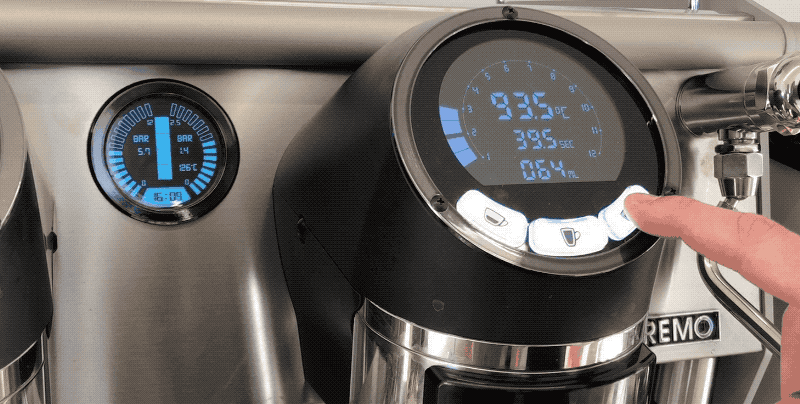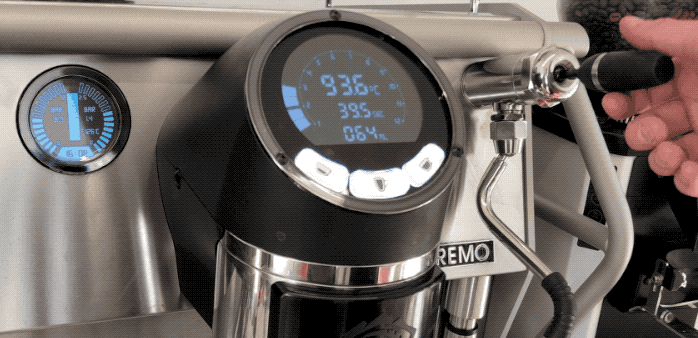The Steam Boiler and Steam Wand
An Important Note on Boiler Safety: Espresso machine boilers are designed to function at a setting of between 1.0 and 1.3 bars of pressure. However, the steam temperature is well above the normal boiling point of water, which at sea level is 100° C. Steam boilers are usually set at between 120–125°C. Steam boilers are not designed to endure more than 2 bars of pressure, and the copper, brass, or stainless steel from which they are made is not usually more than 2 millimetres thick. At 3 bars there is a high likelihood of an explosion. To prevent this, boilers are fitted with an overpressure valve. These valves usually have a tamper wire, like one you might see on an electricity meter. Be sure you’re aware of tamper wires, and don’t tamper with them. In the extremely rare instance of a valve failure, if you notice the pressure gauge climbing past 2 bars, switch the machine off immediately.
Most espresso machines have two pressure gauges, both of which are often displayed behind the same dial. One gauge is for pump pressure created by the machine’s propeller-driven pump.

Gif: A close-up on the pressure gauge of a machine to show the response of the gauge after the pump is switched on
This gauge will often show a pressure reading of up to 16 bars. This sounds dangerously high, but the portafilter and filter basket experience this pressure spread out across only a few square centimetres of surface area, so the amount of outward force is far less than it would be if the same level of pressure were applied across a large chamber such as a steam boiler. The second gauge, which measures boiler pressure, is usually marked with a red warning line at the indicator for 2 bars of pressure.

Gif: A close-up on the pressure gauge and footage of Matt opening and closing the steam wand to show the response of the gauge.